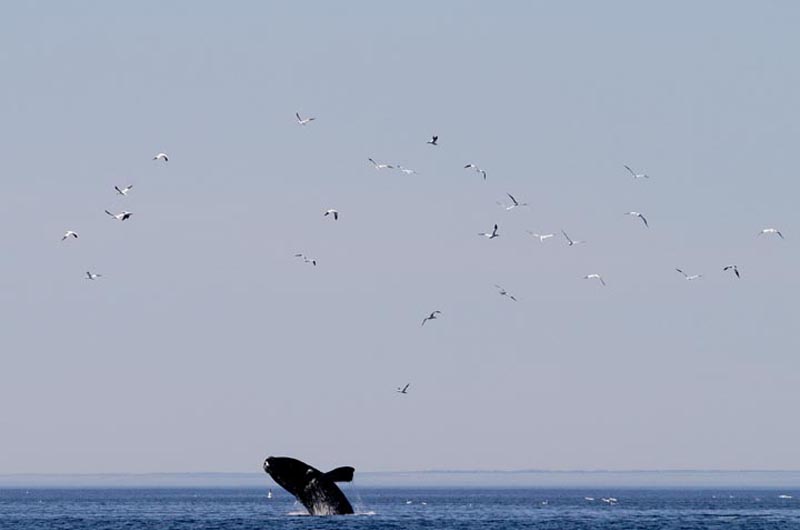It’s springtime, and for right whales, the plankton feeding is easy. A large group of the endangered mammals were spotted via aerial surveys in the waters between Gay Head and Block Island in the late winter and spring. “That’s a really interesting area that’s had relatively little survey effort until recently,” said Philip Hamilton, a research scientist with the New England Aquarium. The surveys began because of the Cape Wind project, he said, as part of an effort to determine the impact the Nantucket Sound project would have on endangered species.
North Atlantic right whales are large baleen whales that grow up to 70 tons and live primarily in coastal waters. Calving takes place in waters off Florida and Georgia, and the whales often come to the waters off New England to feed in the late winter, spring, summer, and fall. They eat copepods, tiny planktonic crustaceans.
Right whales, which were hunted nearly to extinction in the nineteenth century, are still critically endangered. Today there is an estimated population of 522 individuals. That’s a happy increase from the 1980s and 1990s, when the number went as low as 300 to 350 whales, but still far below what biologists consider to be a safe and sustainable population. Successful breeding, in particular, still fluxuates alarmingly.
Hamilton, who manages the catalogue of photographed and identified right whales, can recognize individuals through unique patterns of roughened skin called callosity tissue that erupts on the whales’ chins, above their mouths, and over their eyes. He says that this year seventeen calves have been documented off Florida and Georgia by survey teams, a number that is better than it has been in some past years – for example, only one calf was born in 2000 – but still not where the reproduction rate should be.
For Hamilton and his colleagues, the low number of whales offers at least one small consolation. “A neat thing about this work is it’s a small enough population that you have a feeling of intimacy,” Mr. Hamilton said. “It’s not just data, but individuals. You remember their sighting history, who their mom was, where they were born, and their history.”
As for the new findings of regular visits by right whales to Vineyard waters, the aerial surveys are not currently slated to continue without additional grant money or other funding. “It’s just an area people haven’t really looked at much,” said Hamilton, “and given what they’ve found so far, I think that’s definitely an area that’s worth looking at more.”





